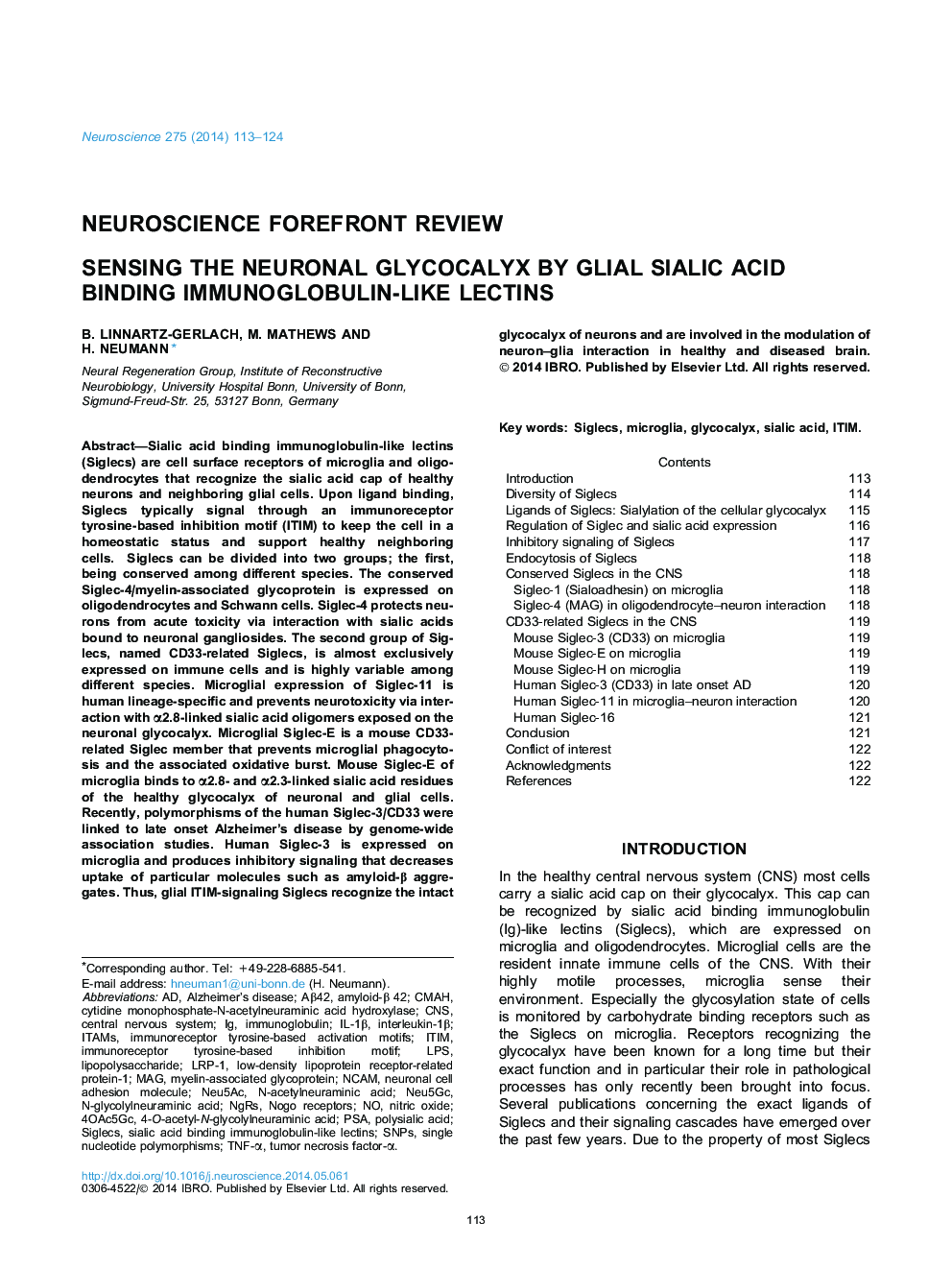| کد مقاله | کد نشریه | سال انتشار | مقاله انگلیسی | نسخه تمام متن |
|---|---|---|---|---|
| 6273435 | 1614801 | 2014 | 12 صفحه PDF | دانلود رایگان |

- Siglecs bind to sialic acids of the intact glycocalyx.
- Inhibitory Siglec-signaling keeps glial cells in a homeostatic status.
- Microglial Siglecs are involved in modulation of neuron-microglia interaction.
- Siglecs can be neuroprotective by preventing primary phagocytosis and the associated oxidative burst.
- Siglec-3/CD33 variants are linked to Alzheimer's disease.
Sialic acid binding immunoglobulin-like lectins (Siglecs) are cell surface receptors of microglia and oligodendrocytes that recognize the sialic acid cap of healthy neurons and neighboring glial cells. Upon ligand binding, Siglecs typically signal through an immunoreceptor tyrosine-based inhibition motif (ITIM) to keep the cell in a homeostatic status and support healthy neighboring cells.Siglecs can be divided into two groups; the first, being conserved among different species. The conserved Siglec-4/myelin-associated glycoprotein is expressed on oligodendrocytes and Schwann cells. Siglec-4 protects neurons from acute toxicity via interaction with sialic acids bound to neuronal gangliosides. The second group of Siglecs, named CD33-related Siglecs, is almost exclusively expressed on immune cells and is highly variable among different species. Microglial expression of Siglec-11 is human lineage-specific and prevents neurotoxicity via interaction with α2.8-linked sialic acid oligomers exposed on the neuronal glycocalyx. Microglial Siglec-E is a mouse CD33-related Siglec member that prevents microglial phagocytosis and the associated oxidative burst. Mouse Siglec-E of microglia binds to α2.8- and α2.3-linked sialic acid residues of the healthy glycocalyx of neuronal and glial cells. Recently, polymorphisms of the human Siglec-3/CD33 were linked to late onset Alzheimer's disease by genome-wide association studies. Human Siglec-3 is expressed on microglia and produces inhibitory signaling that decreases uptake of particular molecules such as amyloid-β aggregates. Thus, glial ITIM-signaling Siglecs recognize the intact glycocalyx of neurons and are involved in the modulation of neuron-glia interaction in healthy and diseased brain.
Journal: Neuroscience - Volume 275, 5 September 2014, Pages 113-124